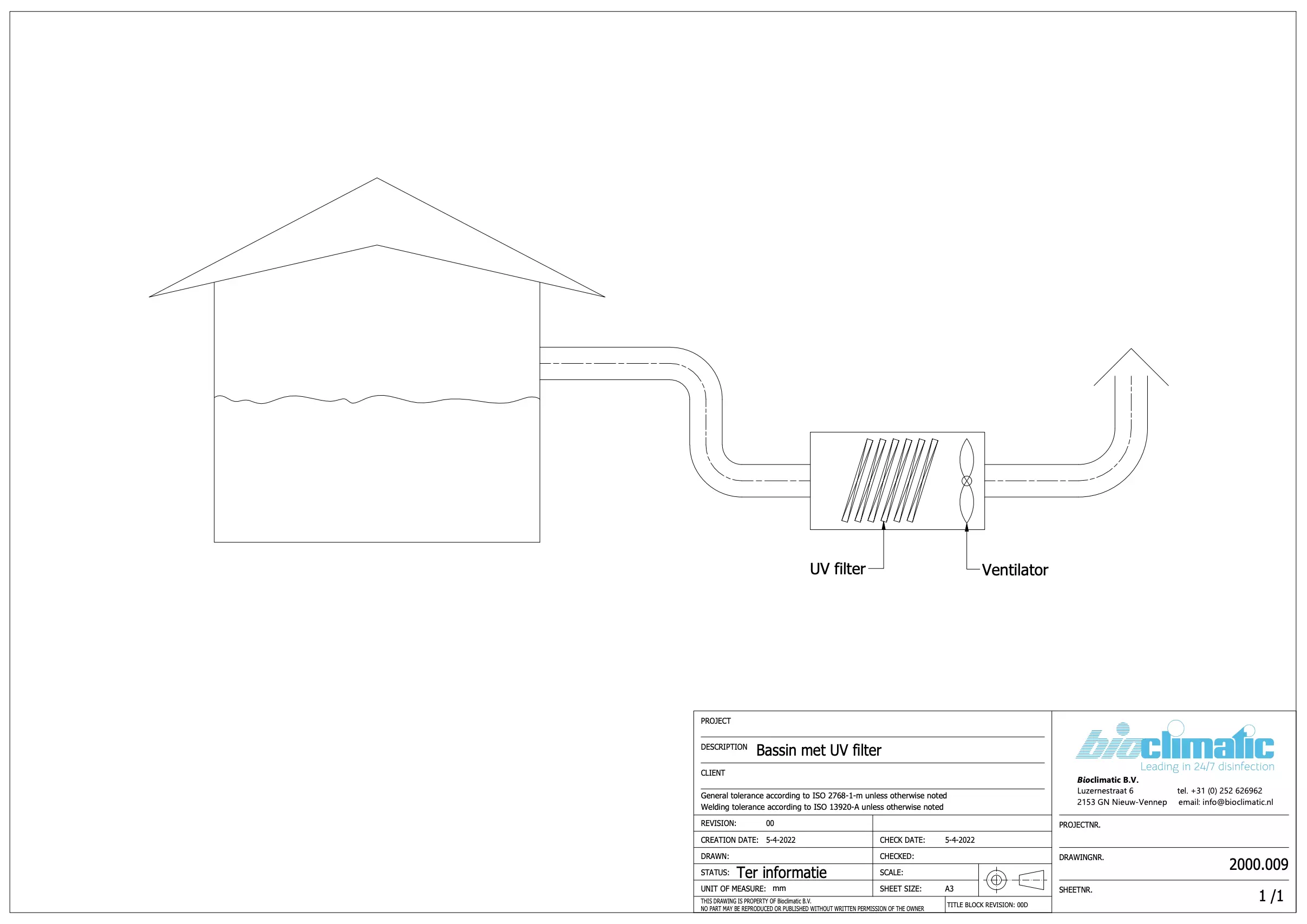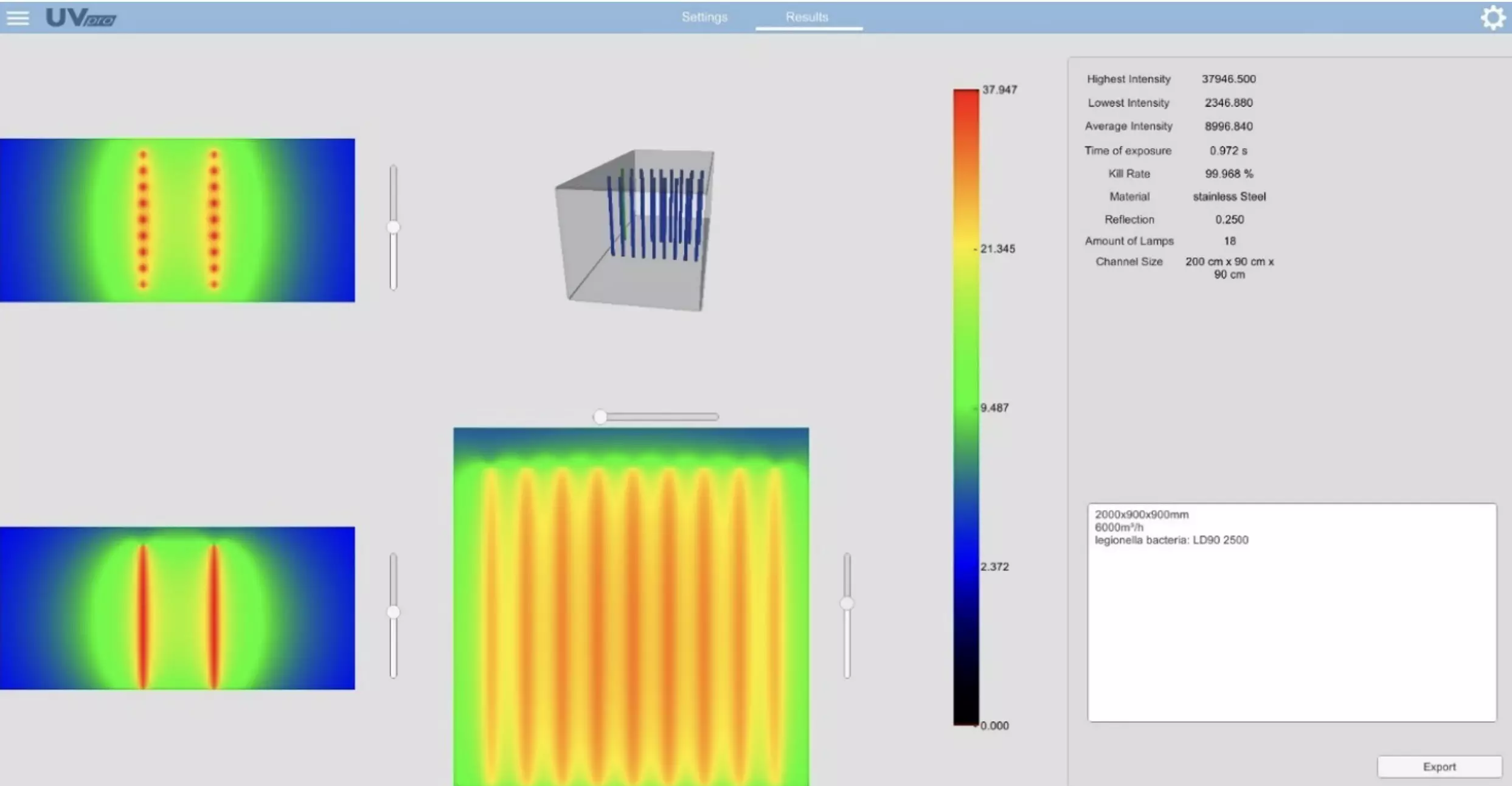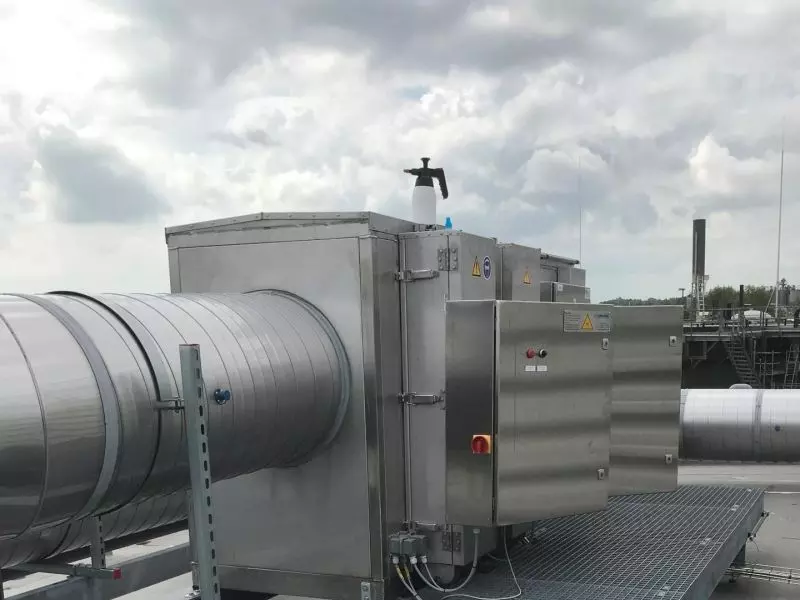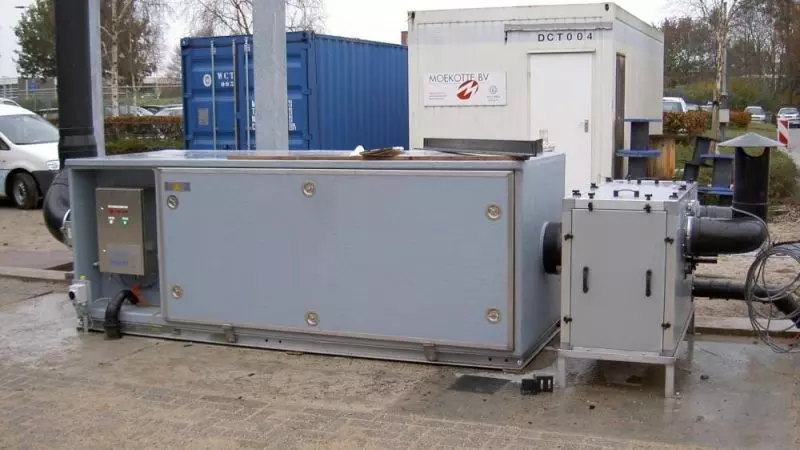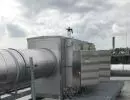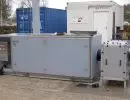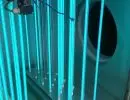Between 2017 and 2019, it was established that wastewater treatment plants can spread Legionella via aerosols in the (outdoor) air.
Warm process water in combination with an open aeration basin presents a risk of spreading. RIVM, (National Institute for Public Health and the Environment in The Netherlands) has conducted research and describes measures to limit the risks of legionella. One of the measures is the covering of open aeration basins and the disinfection of exhaust air. (RIVM Letter Report 2019-0061, Inventory of Legionella risks at wastewater treatment plants, page 58.)
In this article we elaborate on the option to disinfect exhaust air with UVC light. Assuming a completely airtight covered basin.
Process setup
The air from a covered basin is extracted and disinfected before it is blown out into the outside air. It is important that the cover is almost completely airtight and is pressurized. This prevents any leakage of possibly contaminated air to the outside.
Sketch of the UVC system to disinfect exhaust air set up:
Working principle of UVC disinfection
There is scientific research to the sensitivity of Legionella bacteria. We work with a lethal dose (amount of energy required for a 90% reduction on Legionella bacteria) of 2.5 mJ/cm2 on Legionella pneumophila based on, among others, Yamamoto (1987) and Kowalski (2001). With this dose 90% of the Legionella bacteria present in the exhaust air are deactivated. To achieve a higher degree of disinfection, the dose must be doubled. For a reduction of 99.9% we use a dose of 7.5 mJ/cm2.
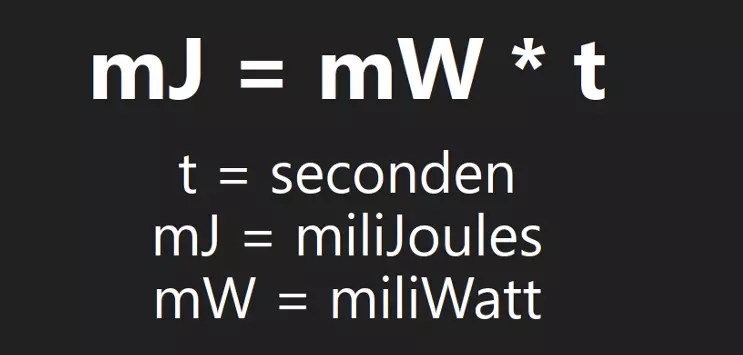
The dose is the product of light intensity (in mWatt/cm2) and contact time (in seconds).
By calculating the average light intensity in the reactor chamber and taking the air speed into account, a theoretical degree of disinfection is calculated.
Design UVC reaction chamber based on 6,000 m3/hour, 18 UVC lamps, 99.9% reduction in a stainless steel housing of 200x90x90cm:
Practical aspects
The air channels and UVC disinfection components can be manufactured in corrosion-resistant stainless steel (316). Monitoring of the lamps, the maintenance interval and the air flow is done in the control unit of the air handling unit.
For maintenance, UVC lamps must be easily accessible for cleaning and replacement. When using a drip tray, the condensation water must be safely discharged. We use waterproof UVC lamps (IP68) in these situations to prevent malfunctions.
Points of attention
- There is no effect on the odour of the exhaust air because UVC lamps at 254nm do not generate ozone
- Regular inspection of the installation is necessary to check the status and if required remove deposits on UVC lamps
- Lifetime of UVC lamps is 18 months with 24/7 use
Questions or looking for specific advice? Bioclimatic supplies and installs UVC components and advice or complete installations to prevent the spread of Legionella.


